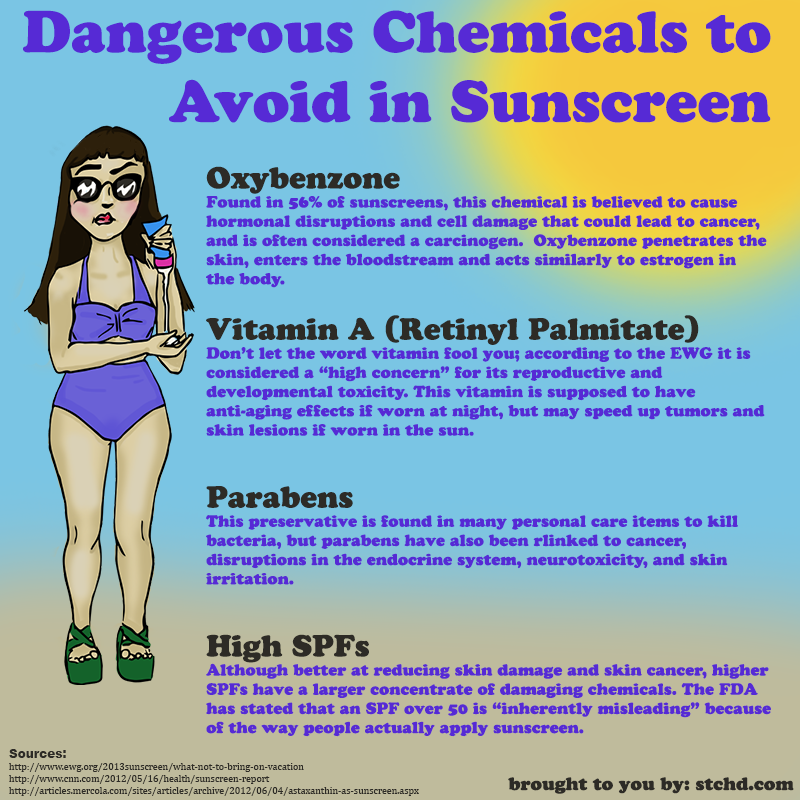Cosmetics in your medicine chest — are they safe or should you be worried?
According to the Environmental Working Group (EWG), in the U.S. it’s been more than 80 years since Congress last updated the federal law designed to ensure that personal care products are safe.  Although other countries have stringent regulations about what goes into that tube or plastic bottle, the U.S. Food & Drug Administration (FDA) doesn’t require testing of all ingredients in personal care products before they are used.
Although other countries have stringent regulations about what goes into that tube or plastic bottle, the U.S. Food & Drug Administration (FDA) doesn’t require testing of all ingredients in personal care products before they are used.
The Personal Care Products Safety Act has been languishing in Congress for years but it was introduced again for 2019. Sponsored by Senators Dianne Feinstein of California (D) and Susan Collins of Maine (R), this act would “modernize the Food and Drug Administration’s (FDA) oversight authority and give consumers confidence that everyday personal care products won’t harm their health,” according to Ms. Feinstein. The bill gives the FDA the authority to demand transparency from the largely unregulated $60 billion personal care industry. The bill will allow government inspections of the facilities in which products are made and will require companies to release a detailed list of ingredients in their products. And the bill includes a protocol of product recall if any ingredients are found to be harmful.
Other countries have protections in place to inspect and regulate chemicals in cosmetics. The Campaign for Safe Cosmetics reports that European Union laws ban 1,328 chemicals linked to cancer, genetic mutation, reproductive harm or birth defects. The U.S. FDA has banned or restricted only 11 chemicals from cosmetics.
What about Ecuador? Comunidad Andina details the regulations for manufacturing and marketing cosmetic products. It appears that Ecuador, as well as Bolivia, Colombia, and Perú all follow these directives, which also say that they consider the U.S. FDA and PCPC (Personal Care Products Council), the European Cosmetic Toiletry and Perfumery Association (COLIPA) and the Directives of the European Union when considering whether to include or exclude an ingredient.
If you’re concerned about what you put on your skin, read the ingredient label first. On a product label, the ingredients are listed in order of predominance, with the ingredients used in the greatest amount first, followed in descending order by those in smaller amounts.
Spring Cleaning!
One of the most important factors to consider when buying personal care products and cosmetics is this double-edged sword: cosmetics have the potential to harbor bacteria, but over time chemicals meant to protect you may be rendered ineffective, or worse, potentially irritating or infectious. Maybe you have some old favorites sitting in your makeup bag, but how old is too old? Maybe you want to clench your teeth, take a deep breath, and do some label reading?
It’s time for some spring-cleaning. Toss out the old in favor of new, safer products.

Micheleeng.com
Moisturizers, Body Lotions, Foundation
Packaging can make the difference between safe or risky. Dispensers that limit air and light are safe — pump dispensers and squeeze tubes — but creams in jars can be risky. Every time you open the jar and stick your fingers in to grab a dab, there’s an opportunity to introduce bacteria. Makeup foundation should be purchased in pump bottles (in the small size) that dispense only what you need.
Eye makeup
Never share your eye makeup unless you want to share your germs. Liquid eyeliner is good for up to a year — solid eyeliner and eyebrow pencils are more stable — with an exception! If the tip gets white or gray, it is a sign of mold. Sharpen your pencils frequently. Once opened, mascara is good for about three months, then throw it out.
Makeup sponges
Sponges are certainly convenient, but they are notorious for harboring bacteria — dermatologists advise either use clean fingertips to apply your foundation or if you must, scrupulously wash your sponges and brushes thoroughly with soap and water after each use and air-dry.
Personal Care Products: Avoid These Chemicals
Makeup, shampoo, soap, toothpaste, sunscreen, hair products, moisturizers, deodorant, body lotions, baby products, feminine hygiene products — and much, much more — all have the potential to contain certain chemicals that can bioaccumulate and have toxic side effects.

Labeling lingo?
Buy “fragrance-free” but ignore the other ‘front-of-the-package’ labeling. Terms like ‘natural,’ ‘organic’ or ‘pure’ carry no legal standing. ‘Dermatologist-tested, ‘non-irritating’ or ‘hypo-allergenic’ products are just marketing terms. According to Dr. Bruce Robinson, clinical professor of dermatology at New York’s Lennox Hill Hospital, there is no standard or board to confirm this claim. Although the U.S. Food & Drug Administration attempted to regulate this obfuscatory behavior of manufacturers, it’s hopeful that the bill mentioned above currently before the Senate will become law. We’ll see.
The FDA says that as consumers, we do have one strategy that is still useful. FDA regulations require the ingredients used in cosmetics to be listed on the product label, so consumers can take steps and choose.
Although this list of chemicals is not exhaustive, the following are the most offensive, and commonly found in products. Read the ingredient label and for more information, visit the Environmental Working Group’s Skin Deep® Cosmetic Database to learn more.
Formaldehyde: in nail polish, body washes, hair products, eye shadows, and more — used to prevent bacterial growth — can cause allergic reactions and is a known human carcinogen. Unfortunately, formaldehyde goes by a variety of different names such as quaternium-15: learn more from SafeCosmetics.org here.
Parabens: used to preserve and provide fragrance, parabens are known endocrine disrupters. Found in makeup, body washes, deodorants, shampoos, and facial cleansers. Look for products labeled “paraben-free.” Read more here.
Synthetic colors: for example, D&C Red 27 or FD&C blue 1 are derived from petroleum or coal dye — both are banned in the European Union.
Triclosan: an antibacterial agent found in some kinds of toothpaste, deodorants, and antibacterial soaps: because of the long-lasting effect on aquatic life and potential for creating resistant bacteria, it is restricted in cosmetics in Japan and Canada. The Environmental Protection Agency has found that soap and water (and friction!) are just as effective at protecting against bacteria as ‘antibacterial washes’ are. Read more here.
Sodium lauryl sulfate (SLS) / Sodium laureth sulfate (SLES): a surfactant found in more than 90% of personal care and cleaning products (foaming products). SLS’s are known to be skin, lung, and eye irritants.
Oxybenzone: used in more than 50% of sunscreens as a UV light absorber, but may be an endocrine disruptor and cause photoallergic reactions. Japan restricts use in personal care products.

Toluene: a common solvent used in paint thinners, also found in moisturizing creams and nail polish. It’s a neurotoxin and pregnant women should avoid (so should everyone).
Fragrance and Phthalates: Fragrances encompass hundreds of synthetic chemicals including phthalates — they are used to help hold color and scent in products. Since companies do not have to disclose these individual chemicals, it’s prudent to avoid “fragrances.”
Lead and other toxic ingredients: SafeCosmetics.org writes that there is no safe level of lead exposure, but it appears that just about all lipsticks on the market, some of the most popular and expensive ones, contain not only lead, but other toxic heavy metals, including chromium, cadmium, aluminum, manganese, and lead. Lead is linked to learning, language, and behavioral problems, reduced fertility in men and women, and hormonal and developmental delays and changes. It does not show up on the ingredient label: buyer beware.
What to use instead?
There are options for safe shampoos, soaps, cleansers, even for some safer cosmetics, and you can make some products yourself at home. I’ll share more in my upcoming column on Safer Personal Care Products. Feel free to write to me at SusanTheDietitian@gmail.com and share your favorite home personal product recipes, or where you purchase your safe cosmetics and products here in Cuenca.
Sources:
ChemicalWatch.com. Congress revisits legislation to overhaul US cosmetics rules.
EWG.org. Environmental Working Group: Cosmetics: The Personal Care Product Safety Act.
EWG.org. EWG’s Skin Deep® Cosmetics Database.
FDA.gov. U.S. Food & Drug Administration. “Hypoallergenic” Cosmetics. SafeCosmetics.org. Campaign for Safe Cosmetics.
TheFashionSpot.com. New Senate Bill Targets the Safety of Personal Care Products — Finally.
Susan Burke March, a Cuenca expat, is a Registered and Licensed Dietitian, a Certified Diabetes Educator who specializes in smart solutions for weight loss and diabetes-related weight management. She is the author of Making Weight Control Second Nature: Living Thin Naturally—a fun and informative book intended to liberate serial dieters and make healthy living and weight control both possible and instinctual over the long term. Have a question for Susan? Email SusanTheDietitian@gmail.com


















